Contents [hide]
Light has always had a very deep and essential meaning for men. There is no religion that hasn’t made it a key element in its mythology, no civilization that hasn’t celebrated it as an assimilable, if not overlapping, element to the very concept of life. The reasons are obvious, and certainly deserve a more in-depth discussion.
We need to consider a particular kind of ‘light’ associated with religion, spirituality. We’re talking about liturgical candles.
Candles, since their creation, have appeared in the rites and ceremonies of many religions.
For example, in the Jewish religion, the lighting of candles on a Friday evening, to celebrate the beginning of Shabbat, or the Hanukkah Festival, the Festival of Lights, during which a candle is lit every night for eight consecutive days to commemorate consecration of a new altar in the Temple of Jerusalem after the freedom conquered from the Hellenic invaders. The Jews still have a custom of lighting a candle that lasts 24 hours to mark the anniversary of a loved one’s death.
Christianity has adorned candles and their light with an even more significant importance.
“And God said: Fiat lux!, Let there be light. And there was light.“(Gen 1,3).
This is one of the first things we read in the Bible, the creation of light by God the Father. This was his first gift for the world that He is creating, the first visible manifestation of His Will, of His Essence, for where there is God there can no longer be darkness. And that’s not all. It is light that allows us to see, to see the magnificence of the world created by God. Without light the Creation itself would have no reason to exist, it would lose much of its immense greatness. A world that cannot be admired does not exist.
From this moment on, then, from this first spark arising from an act of love and will, the idea of God is constantly connected to that of light. A light that illuminates, warms, vivifies, nourishes and ‘infects’, improving the colours that are exposed, wrapped and fed by it.
Liturgical candles are linked to this idea of God being understood as light, and above all of Jesus as the Light of God. In fact, Jesus is repeatedly defined in the Scriptures as the “light that enlightens the world”.
“In him was life; and the life was the light of men. The light shone in the darkness, and the darkness has not overwhelmed it” (John 1: 4-5)
“The true light that enlightens every man was coming into the world“(John 1: 9)
Then spake Jesus again unto them, saying, I am the light of the world: he that followeth me shall not walk in darkness, but shall have the light of life.” (John 8:12)
The light in this case has an exquisitely spiritual value, of guidance in the darkness, of knowledge of God who, through His Son, descended on us, opening our eyes and making us worthy of His presence, and of His consideration.
Again, it was Jesus himself who told his disciples: “I am the true light” and later: “You are the light of the world … your light must shine before men so that they may see your good works and glorify the Father who is in heaven!” (Matt. 5:16).
It is therefore normal that in churches, candles are placed on the altar, or near the tabernacle, and are the protagonists of rites and celebrations.
Not only that, the church uses candles in almost all the sacraments, from baptism to anointing, as irreplaceable symbolic elements.
We want to try to understand and identify the various liturgical candles, to discover their meaning and their importance in the area of the sacred rites.
Candle of baptism or baptismal candle
Baptism is the first sacrament imparted to the new Christian. Usually this happens when it is still a new-born, if it belongs to a religious family, but it can be celebrated at any age. It is fundamental and indispensable, because it is through this that Original Sin is washed away from the soul, making us pure and ready to welcome God into our lives.

Besides the presence of a priest who pronounces the words of the ritual and the gestures necessary for the new faithful to begin his or her new life of faith, Baptism involves the use of some objects, which in this context assume a series of profound and symbolic meanings. There is water, of course, which washes away original sin; oil of the catechumens, applied on the chest as a shield against temptation and evil; the chrism, which consecrates God to the newly baptized; the white dress, a symbol of purity and rebirth; and, finally, the lighted candle, which is given to the godparents who accompany the new Christian, and symbolizes Christ, the light of the world.
The symbolism of the lit candle to fulfil the rite of Baptism has ancient origins and expresses different aspects of the spiritual life of the newly baptized.
First of all there is the wish on the part of those who love him that he or she can find the light in their own existence (John 8.12 – “I am the light of the world”). The desire is for a life with Christ and in Christ, therefore, illuminated by His presence, by His example. The fact that today the candle is handed over to godparents, is symbolic of their role. The candle delivered in their hands symbolizes the fact that the newly baptized will not have to carry out his own search for light alone, but that these strong and wise presences will guide him at all time, to help him, to advise him and to make him become a true Christian .
Secondly, the baptismal candle indicates that the newly baptised must become in turn a light for the world (Mt 5:14 – “You are the light of the world; a city placed on a mountain cannot remain hidden”) and to do so he must lead a life of industrious witness (Matthew 25.1-15 Parable of wise virgins and foolish virgins).
The baptismal candle accompanies the faithful throughout his or her religious life. In fact they must be reported to the Church on the occasion of the other sacraments. It is a sort of ‘identity document’ of the faithful, a passport that allows him to access the religious celebrations that accompany the most important moments of his or her life.
Easter candle

The Easter candle is accessed during the Easter Vigil, the solemn mass celebrated after sunset on Holy Saturday and before the dawn of Easter Sunday, to celebrate the resurrection of Jesus. More than in any other situation therefore, the lighted candle symbolises, in this case, Jesus as the “Light of the World”, risen from the dead to enlighten the path of His Sons and ensure them of salvation.
The Easter candle is then left on at the altar throughout Easter time and is extinguished at Pentecost, when the Ascension of Jesus to glory in Heaven is celebrated. Usually it is a very large and richly decorated candle. Outside of Easter, it is kept in the Baptistery and lit at every baptism. Indeed, his flame will be used to light the baptismal candle which will be given to the godfathers of the newly baptized, as a wish for a life in faith and in the light of Christ. The Easter candle is also used on the occasion of a funeral, as a symbol of hope for resurrection and eternal life.
Votive candles
Votive candles lit by the faithful in front of an altar, or a statue of Jesus, of the Madonna, of a Saint, have a precise meaning. This is not simply an offer that the Christian makes to accompany his own prayer, to strengthen them or ask for a grace. The lighted candle symbolizes the Christian himself, his being a child of light, and therefore a child of God. Lighting a candle and offering it is a way to affirm one’s will to follow Jesus’ example of being “the light of the world”. Lighting a votive candle also expresses the desire to entrust one’s words and thoughts to the Lord, to Our Lady, to the Saints. It is a request for help, a light that illuminates our life from above, perhaps at a time when we are struggling in the darkness. Finally, the offer we leave when we light the candle is a sacrifice that accompanies our prayer with deeds and makes our intention of Faith tangible.

Candle of the Tabernacle
The light that illuminates the Tabernacle is worthy of a separate discourse, indicating the presence of Christ within it. But it is usually a lamp, not a candle, so would be a little beyond our excursus. It should however be remembered that, of all the lights that illuminate our churches, it is one of the most important and precious, the burning flame that symbolizes Jesus and the faith of those who love Him, the inexhaustible light that remains lit for us even when we leave the church, promising us a safe place to return at any time.
Advent candles
The Advent wreath is a custom that developed in Europe, starting in the mid-1800s, to mark the weeks that are lead up to Christmas. It is composed of a wreath of evergreen branches intertwined with each other, holding up four candles. Every Sunday of Advent a candle is lit. Originally, the Advent wreath provided a candle for every Advent day, and often, in modern crowns, a fifth candle is inserted, which is lit at Christmas. The crowns are kept in the house and usually the task of lighting the candles is given to the youngest of the family.
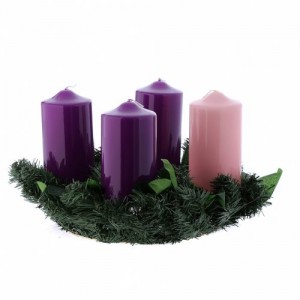
Each of the four Advent candles has a particular name and meaning.
- On the first Sunday of Advent the “Candle of the Prophet” or “Candle of Hope” is lit. It recalls the prophecies about the coming of the Messiah.
- On the second Sunday of Advent the “Candle of Bethlehem” or “Candle of the universal call to salvation” is lit. It reminds us of the city where the Messiah was born.
- On the third Sunday of Advent the “Candle of the Shepherds” or “Candle of Joy” is lit. Recalling the pastors, the first to worship Jesus. Usually it has a different colour than the others, because on the third Sunday of Advent the Liturgy says that the priest should wear pink rather than purple.
- On the fourth and last Sunday of Advent the “Candle of the Angels” is lit. To remind us that they were the first to announce the birth of the Saviour to the world.
Candlemas candles
Forty days after Christmas, the Presentation of Jesus is celebrated at the temple. This party is known by all as Candelora, and owes its name to the ancient popular proverb: ” Per la santa Candelora se nevica o se plora dell’inverno siamo fora “, which is linked to the celebrations of the end of winter in the same period, and to the many candles that are blessed and lit during the celebrations. Once again, the rite refers to Jesus as the light of the world. In the Gospel according to Luke, Jesus is led to the temple by his parents and Simeon affirms: “Now let the Lord let your servant go in peace, according to your Word, because my eyes have seen your salvation, prepared by you before all peoples: light to enlighten the peoples and glory of your people, Israel” (Luke 2: 25-35). The lighting of Candlemas candles is therefore a tribute to Jesus, the bearer of light and a gesture that expresses the will to drive out the darkness.


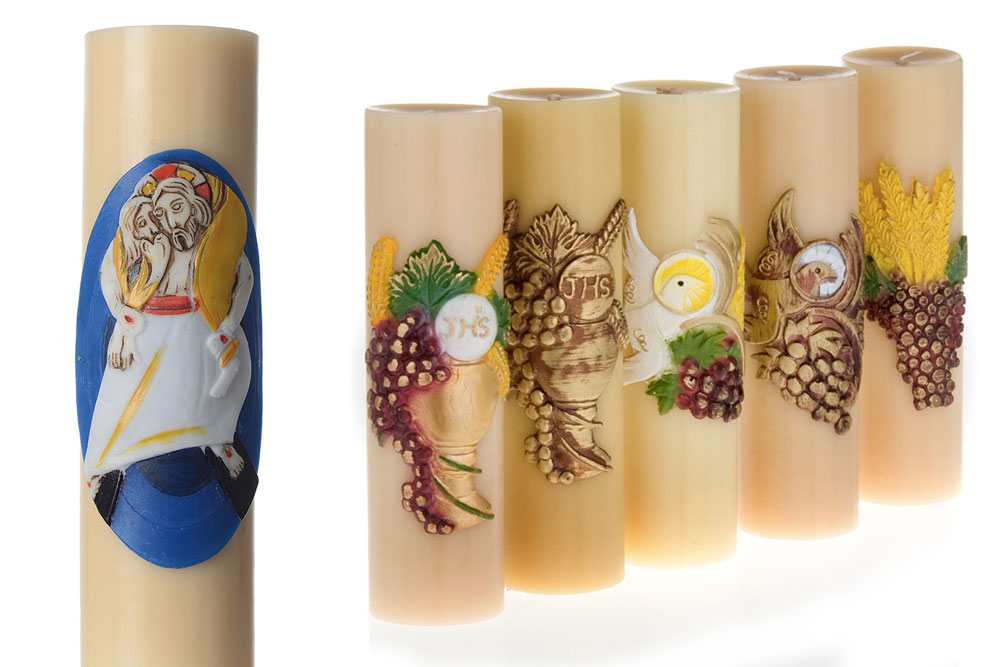
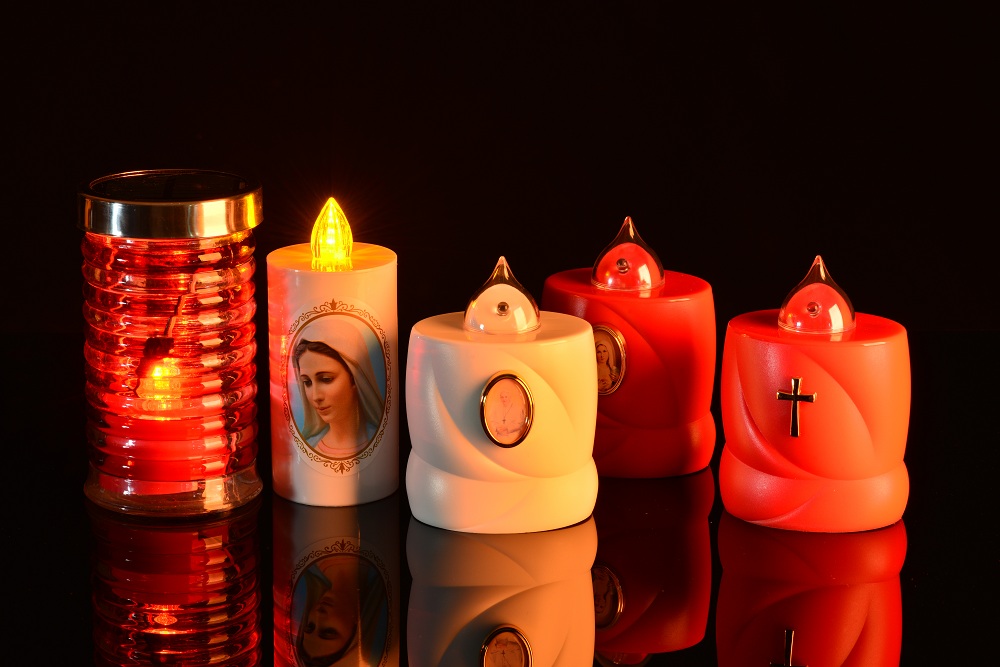
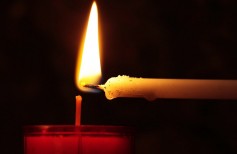
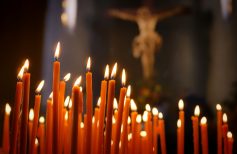
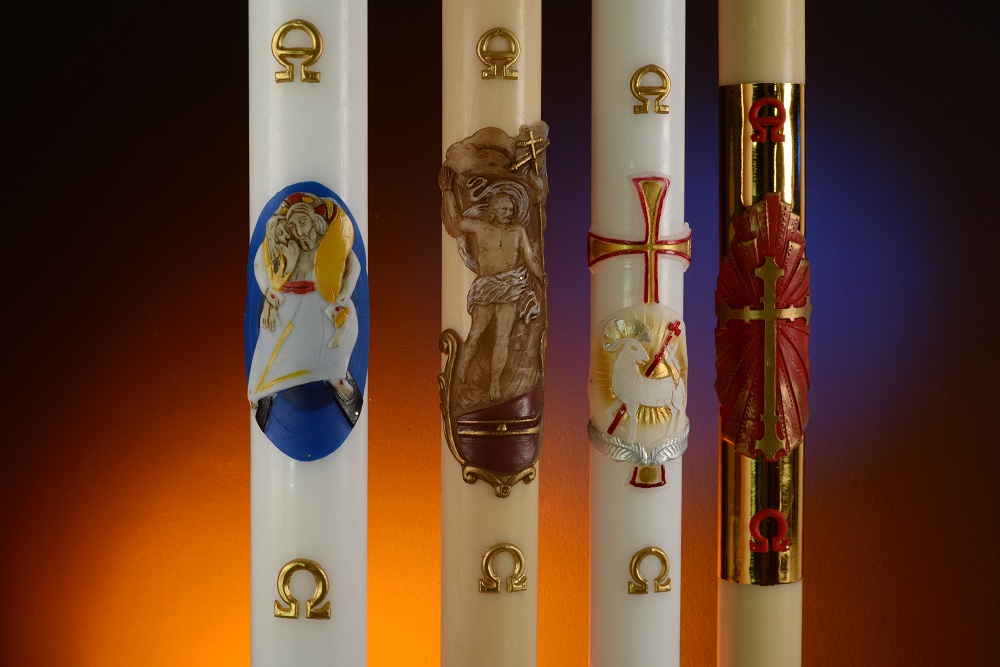
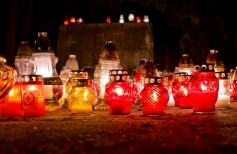
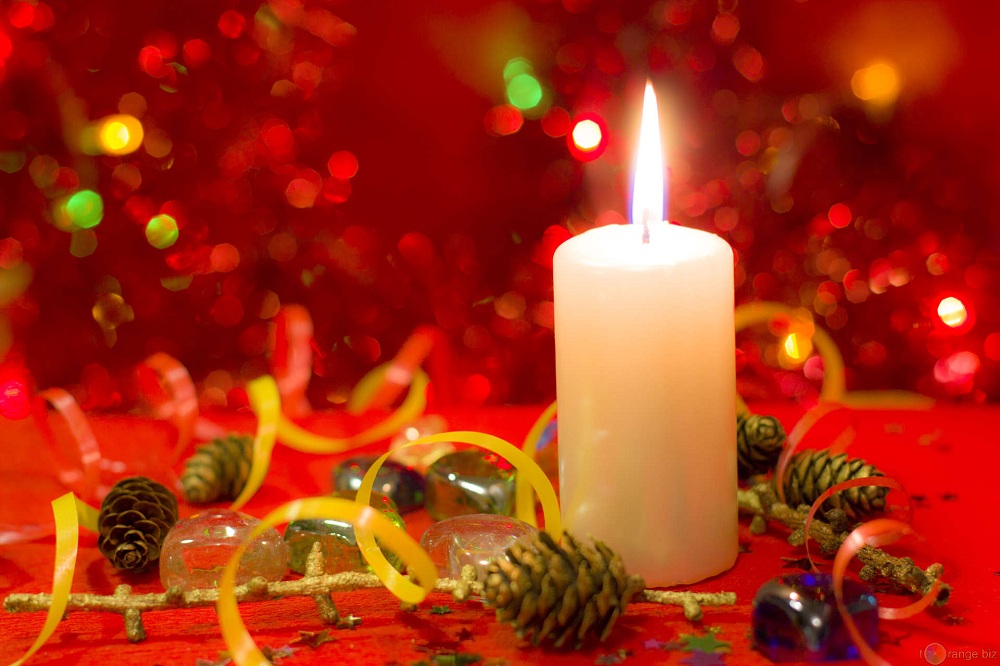










 19 March 2025
19 March 2025






